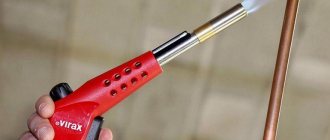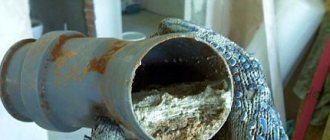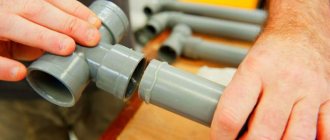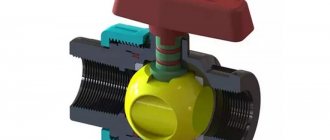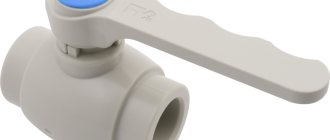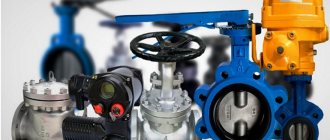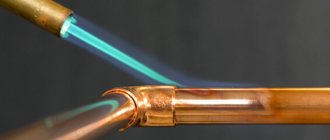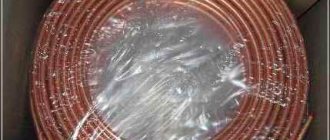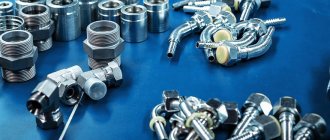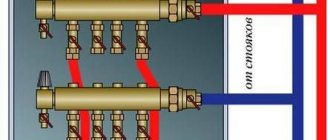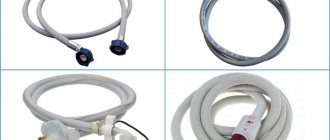A mini gas torch for soldering is an excellent alternative to a soldering iron; it is indispensable in places where there is no power supply. The device is capable of operating from such types of gas as: propane-butane, isobutane, methyl acetylene propadiene (MAPP). A propane soldering torch, unlike an electrically powered soldering iron, only takes three seconds to reach operating temperature.
Despite the fact that the price of a gas soldering torch is higher than its electric counterpart, it is lighter in weight and more compact. Depending on the number of disposable gas cylinders, the device can be used autonomously for a long time, even in the forest.
Gas soldering iron device
Gas burners for soldering with disposable cylinders can be equipped with ignition using a piezoelectric element and differ in design. Basically, the burners are powered from replaceable cylinders, but they also work from stationary sources using adapters. Such equipment is mainly used for soldering joints and sections of copper pipes and other metal products with a low melting point. The soldering process also uses acid and hard solder.
How does this type of soldering iron work? When the valve opens, gas enters the nozzle and is ignited by a piezoelectric element or an external fire source. By adjusting the valve, the flame is adjusted to a thin blue flame with a high temperature at the tip. The maximum temperature with conventional gas reaches 1600˚C, and when using methyl acetylene propadiene (MAPP), the temperature can rise to 2400˚C. The standard nozzle is made of stainless steel with a tip made of brass or ceramic. But there are nozzle attachments with a flexible base that allow you to change the direction of the flame.
Steps for soldering copper pipes
There are several basic rules for soldering copper tubes with a gas torch:
- Before starting the procedure, it is necessary to clean the surface of the edges to be joined from dust, dirt, paint, etc., without using products that create minor defects.
- Before applying solder, surfaces are treated with flux to prevent the formation of pores in the seam, adhesion and better melting of the alloy.
- Heating of all mating elements must be carried out evenly in order to avoid under- or overheating, thereby deteriorating the quality of the joint.
- A gap of about 25-125 microns should be left between the surfaces of the inner and outer walls of the joined edges.
- Upon completion of soldering, in order to avoid the development of corrosion processes, flux must be removed from the surface.
Area of use
Gas equipment of this type is used for soldering copper products: connecting pipes, soldering small cracks, connecting copper cables in couplings, as well as for repairing circuit boards with various solders.
The burner can also be used to repair radiators, both automobile and other types. The function of a soldering iron is not all the capabilities of a gas device.
In plumbing, a torch is used to heat and loosen rusted bolts and other joints.
The temperature of the flame can be used to temper hard metal. But the device is most widely used in economic affairs. If you prefer outdoor recreation, often go hiking, or are a hunter or fisherman, a soldering device will become indispensable in natural conditions. It makes it easy to light a fire, and in some cases even heat up food. Hunters use a device for singeing a plucked bird or a small wild boar. But initially the designer developed the mini-torch as a device for soldering.
Video description
Video instructions for soldering copper pipes with a gas torch:
Soldering with soft solder is carried out according to the following algorithm:
- The edges of the pipe sections are prepared and joined.
- Flux is applied to the contact area.
- Using a burner, the ends of the tubes are heated.
- As soon as the flux changes color, the edge of the solder wire is inserted into the joint.
- As the alloy melts, the structure is rotated around its axis as much as possible to fill it more evenly.
- Upon completion of the procedure, the metal is allowed to cool, after which the remaining flux is removed from its surface.
Brazing copper tubes with a gas torch is carried out in a similar way. The only excellent point in the technology is the need to preheat the refractory solder alloy so that it can acquire the desired state of ductility.
On a note! One of the most common mistakes during soldering is the wrong choice of solder. If possible, the alloy should have similar physical and chemical properties as the structure being connected. First of all, this concerns the coefficient of thermal expansion of metals. If there is a large difference, the seam will begin to deform over time and begin to leak.
Types of gas soldering irons
Tourist
The most common type of burner, which has low fusible properties, is used for household purposes, as well as in construction, where such a device replaces a construction hair dryer, but is independent of the electrical network. The disadvantage of such burners is an unstable flame, which manifests itself when the device is tilted or turned over during the working process. In more expensive burners, such manipulations do not affect the stability of the fire flow.
This type of torch is not used for soldering. Their main function is to ignite a fire or coals for a barbecue, as well as any heating that requires an open flame. Melting frozen sections of pipes, or warming up diesel engines, as well as disconnecting pipes on tow, heating and removing old paint and many other rough jobs.
Turbocharged soldering irons
Ejector soldering irons have a less broad focus, but their price is higher than tourist ones. Used by craftsmen for processing and manufacturing products from non-ferrous metals. High temperature generation and flame control are well suited for hardening, metal soldering or other thermal applications where consistent high temperatures and a well-defined fire cone are required.
Depending on the specific application, burners and nozzles may differ. A microgas lamp for soldering is used in repair and jewelry making, and given the absence of oxygen supply, it allows delicate work to be performed delicately. The middle class of burners has a flame cone thickness of 3-9 millimeters. This tool works well for melting copper in cable joints, as well as copper or aluminum tubes.
Torches with large nozzles and high power are well suited to industries such as artistic forging, precision bending or iron stamping. This particular tool is used by home craftsmen as a base for gas forges and hardening furnaces made with their own hands. Despite possible periodic flashes of gas in ejector soldering irons, in the core itself, the temperature remains relatively stable. The gas preheating circuit makes the device economical, allows you to quickly reach operating power and more accurately control the temperature.
High temperature gas soldering iron
In this type of gas burner, instead of the usual propane-butane cocktail, MAPP (methyl acetylene propadiene) gas is used as fuel, and the flame temperature reaches 2200-2400˚C. Almost all the energy is concentrated in a stable cone with a pronounced boundary. Used for heating, forging and bending hard steels with a high carbon content, as well as three-dimensional parts. The produced qualities help to withstand the technology of hardening and tempering of metal.
MAPP gas torches are capable of soldering and welding stainless steel without overheating even the thinnest parts. MAPP gas has a low boiling point, which makes it possible to use the burner at a temperature of -20 °C, even without a gas heating circuit.
What's with the prices?
A portable “Pencil” type burner, depending on the manufacturer and additional equipment in the form of nozzles, can cost from 400 rubles. (excluding the cost of a gas cylinder, a standard 220 ml is usually about 100 rubles). The model shown in Fig. 1, costs about 800 rubles. As a replacement for an electric soldering iron, it is an almost ideal option. There are options that cost significantly less than the above, are quite functional, but, as a rule, from an unknown manufacturer. You can take a risk and take it (if urgent and responsible work is not planned).
For individual soldering torches without gas cartridges, the price range is almost limitless. The simplest burners with the ability to connect to a gas source and a jet control valve (Fig. 3) of normal quality cost from 200 rubles. They are almost never used for precision work. This is, rather, a universal thing: you can solder something, but not everything, heat something up and bend or attach it. There will be a use. But for competent soldering you need an appropriate torch with the right tools, convenient and reliable.
A more ergonomic device (Fig. 2) is priced a little higher, like most Stayer MASTER MaxTerm models, in the range of 400-600 rubles. They are usually sold in transparent (on one side) plastic packaging, so you can immediately see what exactly is included in the kit in addition to the burner itself.
If you plan to purchase such a gas burner for soldering, so as not to regret it yourself and leave it as an inheritance for your son, you should choose proven brands.
For example, a gas torch-soldering iron DAYREX DR-22 in a case, that is, with a set of nozzles, costs about 2,500 rubles. – an excellent choice for both home and professional use. Produced in China, about ten modifications.
The TS 2200 BernzOmatic torch-soldering iron with a set of nozzles and accessories also costs about two and a half thousand rubles. More advanced and, as a rule, more powerful models of this company, designed for professionals, cost two to three times more. But if the device is purchased for the purpose of, for example, professional repair of refrigerators, air conditioners or other climate control equipment, then spending 5-7 thousand rubles for an almost eternal and easy-to-use burner will quickly justify itself. Burners from BernzOmatic (USA) have exclusively “five-star” reviews.
This list can also include the DREMEL 2000 VERSATIP gas soldering iron, multifunctional, like the two above, but somewhat inferior to them.
For clarity, we summarize some characteristics and prices (average) of soldering torches into a table by manufacturer:
| Brand and model | Portable (P) or on a cylinder (B) | Assembled weight, g (without gas) | Price, rub. (approximately) |
| DAYREX-33 626560 | P | 330 | 3100 |
| DAYREX-21 621534 | P | 120 | 2500 |
| DREMEL 2000 VERSATIP | P | 135 | 3300 |
| Stayer MASTER MaxTerm 55584 | B | 150 | 350-450 |
| Stayer MASTER MaxTerm 55560 | P | 90 | 450 |
| Stayer MASTER MaxTerm 55588 | B | 150 | 250-350 |
| SPARTA 914145 | P | 100 | 400 |
| BERNZOMATIC ST 2200 | P | 270 | 2500 |
| BERNZOMATIC TS 799 | B | 270 | 6500 |
The table does not include super inexpensive devices, since their origin is not always known. Sometimes you can find pencil burners that cost 100 rubles, and this should make you wary, not happy: there are no guarantees that it is safe to work with such a device.
The brand name may hide an analogue made in China. The cost is significantly less, but the production technology is followed.
Below are several photos showing the general appearance, delivery options and configurations of individual models.
Characteristics of gas burners
Considering that the concept of a gas lamp presupposes several types of devices, their parameters are completely different, and only a small part of the technical capabilities will be similar.
Frequent parameters on which the user's choice is based:
- Battery life on one cylinder
- Is there an air leak?
- Nozzle material and length
- Type of connection and type of cylinder
- Possibility of flame adjustment
- Limit flame temperature
- One-handed operation
- Presence of piezo ignition
Propane gas-air burners
All burners in this series are injection-type burners with forced supply of combustible gas and air intake from the atmosphere. A propane-butane mixture is used as a combustible gas in such burners.
GV gas-air burners are designed for heating products made of ferrous and non-ferrous metals, non-metallic materials, as well as for melting the surface of bitumen roll material in the production of waterproofing.
They are often used for heating when bending plastic pipes, drying reinforced concrete panels, foundry molds, brickwork, all thanks to a wide range and the possibility of using special nozzles.
For example, for large volumes of work on laying rolled roofing materials, it is recommended to use a 2-flare gas-air burner with a wide coverage of the heated area.
For heating and heat treatment of parts made of various materials, burners with three flasks of the GV-3V series and a GV-3V-01 burner with three special nozzles are used (to form a “flat torch”, to form a thin, “sharp” flame, flask ø 25 mm) .
Those who need the ability to solder “in the field” should pay attention to the gas-air propane torch of the GVP series. Complete with a small 5-liter propane cylinder, a propane reducer and a rubber-fabric sleeve, it is a convenient mobile portable soldering kit that is easy to take with you. The maximum flame temperature of such a burner is 700°C.
This is sufficient for telephone cable repair services, decorative blacksmithing, electrical cabinet installers and other similar jobs.
Technical features of gas burners
- Flame power - this parameter depends on the type of work to be done. In order to desolder electronic components, minimum power is required, but when heating metal for bending or forging, maximum power is required.
- Torch shape - if you use a flame for heat-shrinking work, or flame processing of large areas, a wide torch is used, but for soldering a clearly defined flame in the form of a needle is used.
- Case material - a plastic case is a budget option, unlike a metal one. But when the nozzle is heated to maximum temperatures and used for a long time in this mode, the plastic may melt.
- Flame stability - if the housing angle changes to 45˚ or more, the flame does not go out, but allows you to work in any chosen position.
- Availability of replaceable nozzles - this equipment is mainly relevant for a soldering iron torch. The delivery set includes nozzles that perform a particular task.
- Special requirements - these features are taken into account when choosing a tourist model, namely: the shape of the burner, the stability of the structure, heating a specific volume of liquid in a certain period of time, the presence of wind protection.
Soft soldering instructions
Attention: the edge of the pipe and the pipe itself must be perfectly smooth and straight - the quality of fastening of the parts will depend on this, therefore it is best to use a pipe cutter for cutting pipes
- Using a pipe expander, increase the diameter of the fitting, and using a bevel remover, clean the edges of the pipe.
- Use a brush to polish the inside of the fitting, and brush the outside of the pipe.
- Apply soldering paste - flux - to the fitting and pipe with a brush and immediately attach the parts, avoiding any type of contamination.
- Using a soldering torch, carefully heat the joint, moving over the entire plane. The criterion for good heating is a change in the color of the paste.
- Complete heating of the parts to be joined and apply solder over the entire surface of the joint. The flame of the burner must not touch the solder wire: the solder must melt on the copper surface of the pipe, precisely from its temperature, without the intervention of fire.
- Wait for the joint to cool naturally - without any means of cooling.
- Be sure to remove any remaining paste from the pipes with a damp sponge. Its effect is only necessary when soldering: it destroys the protective layer of the copper base.
Attention: parts must be well fixed during soldering and temporarily after it, since copper pipes can only be soldered in a stationary position. The joint at the place where the parts are attached must be tight and even.
It will be possible to check the result only when sufficient water pressure is turned on in the pipeline, but if the soldering went well, the reliability of the connection does not decrease in any way due to water temperature, possible pressure drops or time
The joint at the place where the parts are attached must be tight and even. It will be possible to check the result only when sufficient water pressure is turned on in the pipeline, but if the soldering went well, the reliability of the connection does not decrease in any way due to water temperature, possible pressure drops or time.
Fastening copper pipes with other materials
There are several important nuances related to the possibilities of connecting copper structures with products made from other metals:
- Fastening copper and galvanized steel can negatively affect the condition of the galvanized steel pipeline: chemical reactions between zinc and copper lead to the destruction of the former.
- Fastening copper to steel, plastic and brass is safe and does not cause metal corrosion.
Therefore, if there is a need to fasten copper and galvanized pipes, then it can only be done using a brass fitting and only in one direction: along the circulation of water from the galvanized pipe to the copper pipe.
Copper pipes are attached to plastic or steel pipes only with the help of brass squeeze fittings. The main fastening of the system occurs with the help of a clamping ring and a clamping nut of the fitting: they are screwed on to the standard number of turns specified in the technical support of the fitting, and are certainly periodically checked during operation for possible leaks or loosening.
Myths about copper piping
Due to the lack of habit of copper as a material for gas, water supply and heating systems, modern domestic consumers have a certain distrust of this metal. There are two myths:
- Copper pipes are dangerous when in contact with chlorinated water. Of course, copper, starting a reaction with chlorine elements, oxidizes, but the film that appears inside the pipeline, on the contrary, protects the pipes from various chemical actions and is absolutely safe for the human body.
- Copper piping is expensive and impractical despite its high cost. The impracticality is explained by the probable oxidation of the outer side of the pipes, while the inside of the copper pipes also oxidizes, but is completely unaffected by corrosion. The more expensive price of copper pipes is more than covered by the durability of the materials and ease of DIY installation.
But such myths can only be destroyed by many years of practice. It is not for nothing that this metal was used in water supply systems several centuries ago, and copper still has well-deserved recognition in European countries. Due to the ease of installation and quality of materials, copper pipes for home plumbing are more preferable, and will certainly find new admirers in our country.
https://youtube.com/watch?v=N9QwpYEQpUw
Types of connections to gas cartridges
Threaded connections are the most reliable option with maximum tightness. The internal thread cut into the burner body is screwed onto the external thread cut into the cylinder body.
Push-in connection - this design has a wide collar with a cut side groove and a flap protruding in the center. The burner must be pressed tightly onto the cartridge so that the seats match, press and rotate.
This type of connection is the most popular, and unlike a barrel cylinder, which does not have a valve, a collet cylinder can be detached and reattached many times. Using a threaded adapter, you can attach a torch with a threaded connection to the collet cylinder.
